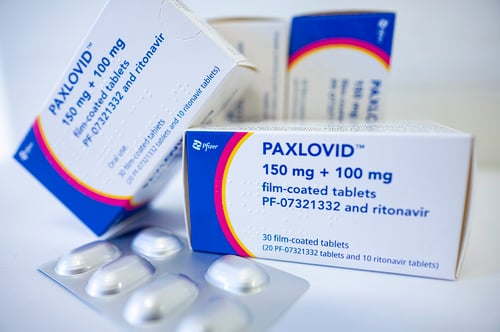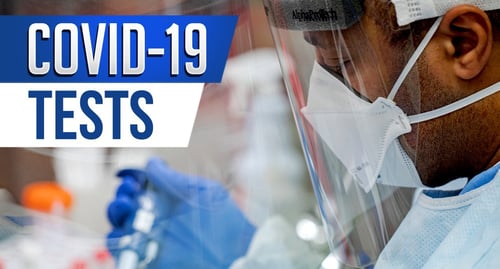

How Do COVID-19 mRNA Vaccines Work?
Unless you worked in the medical research field you likely never heard of mRNA vaccines prior to the COVID-19 pandemic, yet the technology is not an overnight discovery.
In fact, Messenger RNA or mRNA was first discovered in the 1960s and research into how mRNA could be delivered into cells to trigger an immune response in our bodies was first researched in the 1970s.
“The early years of mRNA were marked by a lot of enthusiasm for the technology but some difficult technical challenges that took a great deal of innovation to overcome,” Chris Beyrer, MD, director of the Center for Public Health and Human Rights at the John Hopkins Bloomberg School of Public Health wrote. “The biggest challenge was that mRNA would be taken up by the body and quickly degraded before it could “deliver” its message – the RNA transcript – and be read into the proteins in the cells.”
By the 1990s the first mRNA flu vaccine was tested in mice and a mRNA vaccine for rabies was tested in humans in 2013.
Advances in Nanotechnology Paves the Way for mRNA
Beyrer credits advances in nanotechnology for creating a clear path to today’s mRNA vaccines for the severe acute respiratory syndrome coronavirus 2 (SARS-CoV-2) which causes the COVID-19 disease.
“The solution to this problem came from advances in nanotechnology: the development of fatty droplets (lipid nanoparticles) that wrapped the mRNA like a bubble, which allowed entry into the cells,” wrote Beyrer. “Once inside the cell, the mRNA message could be translated into proteins, like the spike protein of SARS-CoV-2, and the immune system would then be primed to recognize the foreign protein.”
Early mRNA vaccines were developed to fight the Ebola virus in African countries and coronavirus diseases such as SARS (Severe Acute Respiratory Syndrome) and MERS (Middle East Respiratory Syndrome), but the diseases did not spread enough to warrant commercial production.
“Vaccines for those previous coronavirus diseases didn’t get finished, because the diseases were contained and never became a world-wide threat – unlike COVID-19. mRNA vaccines have also been studied for the prevention of influenza, Zika, rabies and cytomegalovirus,” Dr. Stephen Rinderknecht, chair of UnityPoint’s Clinic Vaccine Oversight Committee says.
mRNA Vaccines: Step-by-Step
Thanks to the years of research, both Pfizer-BioNTech and Moderna were able to quickly develop COVID-19 vaccines using the mRNA technology.
mRNA vaccines do not operate on the principle of traditional vaccines, which put a weakened or inactivated germ into our bodies.
Examples using the weakened virus approach, called live virus vaccines, are the measles, mumps, and rubella (MMR) vaccine and the varicella (chickenpox) vaccine.
Examples using the inactivated virus approach, called killed vaccines, is the whooping cough (pertussis) vaccine.
mRNA vaccines, according to the Centers for Disease Control and Prevention (CDC), use mRNA created in a laboratory to teach our cells how to make a protein – or even just a piece of a protein – that triggers an immune response inside our bodies.
“The immune response, which produces antibodies, is what protects us from getting infected if the real virus enters our bodies,” says the CDC.
Here’s how the COVID-19 mRNA vaccines work step-by-step:
- COVID-19 mRNA vaccines are administered with a shot in the upper arm muscle.
- The mRNA enters the muscle cells and instructs the cells to manufacture a harmless piece of what is called a spike protein.
- This is the same spike protein found on the surface of the virus that causes COVID-19.
- Our cells break down the mRNA and remove it after creating this spike protein.
- Our immune system then recognizes that the newly created spike protein, displayed on the surface of the cells, does not belong in our body.
- The immune system begins producing antibodies and activates other immune cells to fight what it perceives as an infection (caused by this new spike protein).
- This response is what your body might do to fight off a COVID-19 infection.
- At the end of the process, our bodies have taught themselves how to protect against future infections from the virus that causes COVID-19.
“The benefit of COVID-19 mRNA vaccines, like all vaccines, is that those vaccinated gain this protection without ever having to risk the potentially serious consequences of getting sick with COVID-19,” says the CDC. “Any temporary discomfort experienced after getting the vaccine is a natural part of the process and an indication that the vaccine is working.”
mRNA Vaccines Do NOT Alter Your DNA
There is a lot of misinformation online, so it is important to understand that mRNA vaccines do not alter your DNA.
DNA, which contains humans' unique genetic code, is in the nucleus of every living cell in our bodies.
The mRNA, a single-strand messenger molecule vs. the two-strand DNA linked together in a spiral, simply delivers a message to your cell's structure that builds proteins.
“After the message is transferred, the cell gets rid of the mRNA. mRNA can’t enter the nucleus of the cell (where DNA is) and does not alter your DNA in any way,” Dr. Rinderknecht says.
mRNA Opens Up a New Era for Vaccines
Fortunately for the world, mRNA technology was ready to go when the pandemic began.
“Thanks to decades of research and innovation, mRNA vaccine technology was ready. With COVID, this technology got its moment and has proven to be extremely safe and effective,” wrote Beyrer. “Already, vaccine manufacturers are developing mRNA vaccines to protect against other respiratory viruses such as the flu. Moderna is exploring applications of the technology to protect against HIV. It’s a new era for vaccine technology and production, and a testament to scientific progress and decades of research.”
The CDC says future mRNA vaccine technology may allow for one vaccine to provide protection against multiple diseases, thus decreasing the number of shots needed for protection against common vaccine-preventable diseases.
And in even better news, beyond vaccines, cancer research has used mRNA to trigger the immune system to target specific cancer cells.
Subscribe to email updates
Related Articles

Topics

Topics

Topics



